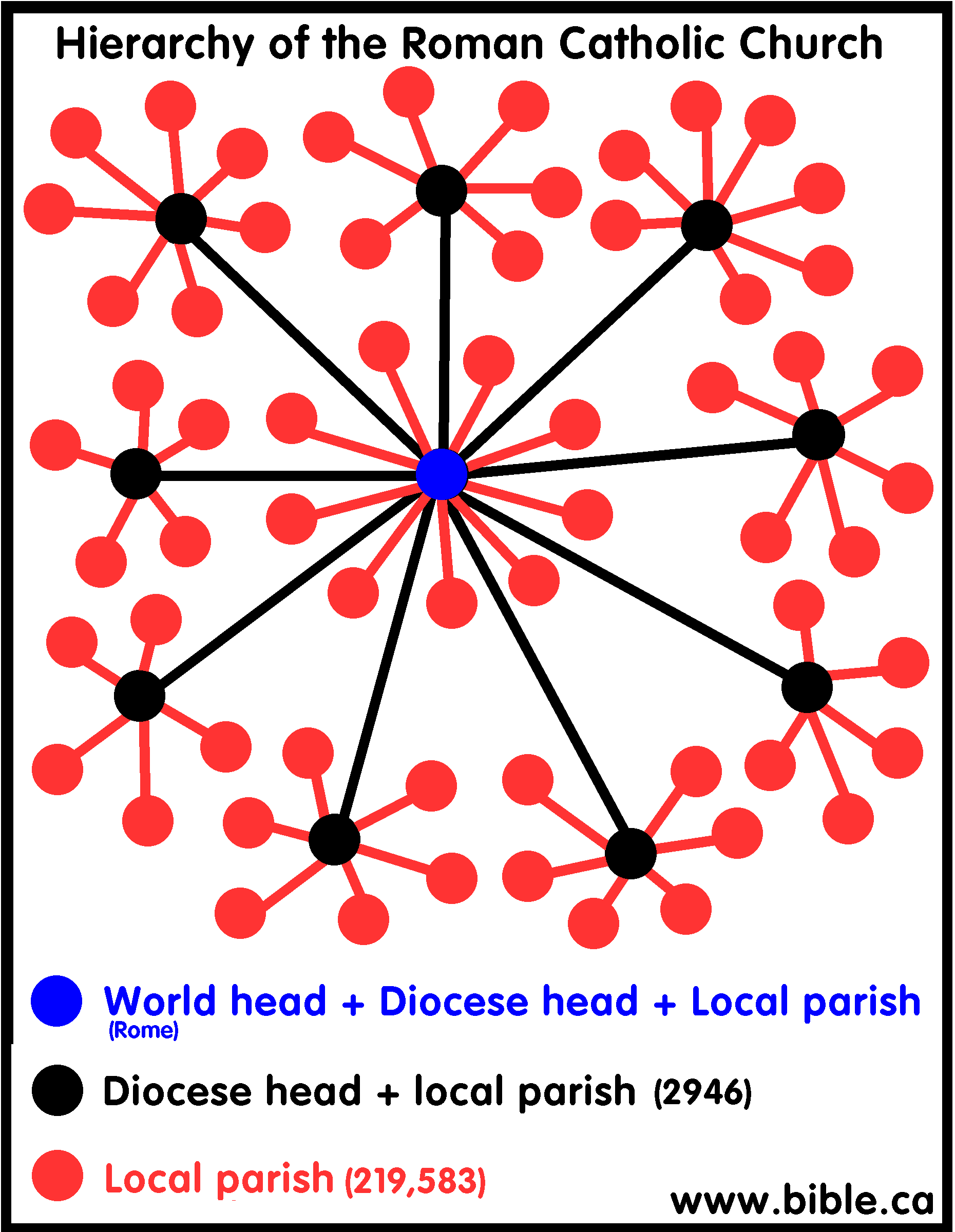Apostate church organization: From 606 AD to the present time: "Monarchy"
This was a departure from the simple bible blueprint of a group of equal elders (presbyters) governing only within their own local church.![]() Learn from the Bible Blueprint, how the church was organized by the apostles!
Learn from the Bible Blueprint, how the church was organized by the apostles!
![]() Find a local congregation of the New Testament church that is organized exactly as the Bible says
Find a local congregation of the New Testament church that is organized exactly as the Bible says
|
John Paul II |
|
Bartholomew |
From 606 AD to the present time:
622 AD:
Muslims change the church in 622 AD leaving only Rome and Constantinople as world powers. This is the way it has been to this very day.Today
: The current organizational status of the Orthodox and Roman Catholic churches:There are really 15 popes that rule the world today. One in Rome and 14 Autocephalous churches. The West is governed by Rome and the East is governed by 14 Autocephalous churches. The bishop of Constantinople is called the "Ecumenical Patriarch" who is "first among 13 other equals". Although the 14 Autocephalous patriarchs are all considered equal, each one rules his own territory with total monarchal control just like the Pope in Rome does. So if you add Rome to the list of 14 Autocephalous patriarchs you have 15 different popes who are all equal with each other. Although there are both philosophical and functional differences in the way Rome and the 14 Autocephalous patriarchs rule their churches, the functional end result is basically the same. You have 15 monarchs and it is merely a difference of management style. King Arthur was still the sole monarch and commander of the Knights of the Round Table, but his management style of first among equals, may in fact be inspired by the Eastern churches. The 14 Autocephalous churches tend to organize from the bottom up, whereas Rome tends to organize from the top down. The 14 "Popes" of the 14 Autocephalous churches will appoint leaders who are put forward by the grassroots and with their approval, whereas Rome just picks without input, the leaders it wants. In the end though, you have 15 equal monarchs, each of whom rule their territories. The Pope of Rome is just one among 15 but for reasons of pride, refuses to humble itself in the face of reality.
The Eastern Greek Orthodox church organization today:
![]()
|
|
Organization and Hierarchy of Autocephalous Orthodox Churches, centered at Constantinople Orthodox Creed Orthodox Catechism |
Eastern Greek Orthodox organizational titles: There are only 5 levels of government in the Orthodox church. These 7titles do not all directly correspond to the 5 levels:
|
Position |
Title |
Number |
|
Ecumenical Patriarch |
His All Holiness |
One in the world |
|
Patriarch |
His Beatitude |
13 in the world |
|
Metropolitan or Archbishop |
His Eminence |
Territorial leaders of country, region or city |
|
Bishop |
His Grace |
Territorial leaders of region or city |
|
Archpriest, Pastor |
Very Reverend |
Pulpit preacher |
|
Protopresbyter |
Right Reverend |
Pulpit preacher |
|
Pastor |
Reverend Father |
Pulpit preacher |
(Click on graphic for high resolution)
The Roman Catholic church organization today:
|
|
Roman Catholic Organization today: 1 Pope |
(Click on graphic for high resolution)

(Click on graphic for high resolution)
Conclusion: History Repeats Itself!
What is most interesting, is that history has repeated itself. The Old Testament has a period immediately following entering the promised land, where there was no king. Then they demanded a King which made God angry. God took away their king saying, "I gave you a king in My anger, and took him away in My wrath." (Hosea 13:1) This shows that God was never happy when the had kings. In the New Testament period, we have no centralization until 606 AD, when the first universal church "king" (pope) took power. Then during the restoration things were restored back to the way God originally intended. Search for a local congregation of the simple
new Testament church that is organized exactly as the Bible says!|
Period |
No King or centralization |
King with centralization |
Restored back to no king without centralization |
|
Old Testament |
Joshua - Judges |
Kings |
Ezra Nehemiah |
|
New Testament |
33-606 AD |
606- 1500AD |
Reformation Restoration 1500- present |
![]() Learn from the Bible Blueprint, how the church was organized by the apostles!
Learn from the Bible Blueprint, how the church was organized by the apostles!
![]() Find a local congregation of the New Testament church that is organized exactly as the Bible says
Find a local congregation of the New Testament church that is organized exactly as the Bible says
by Steve Rudd